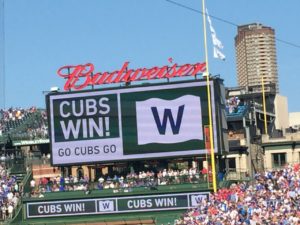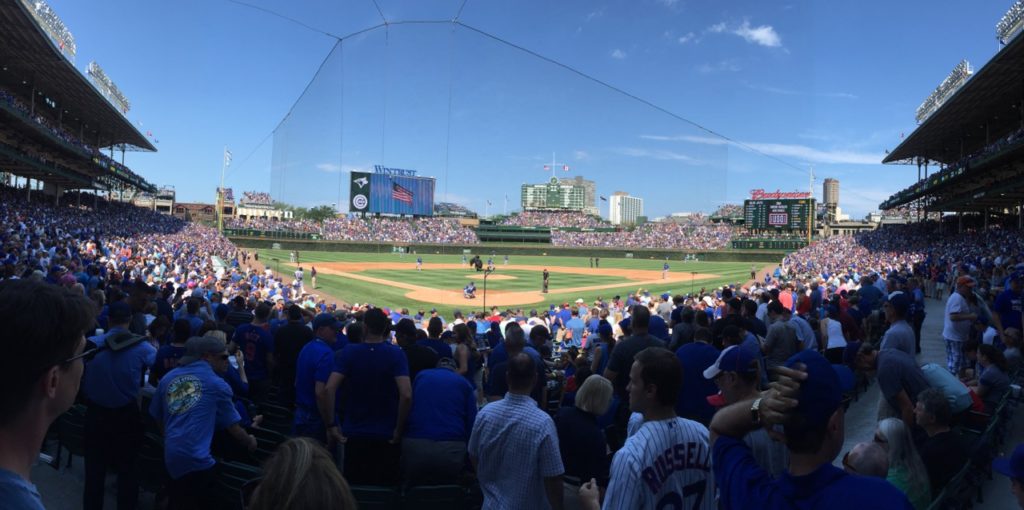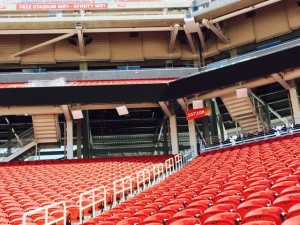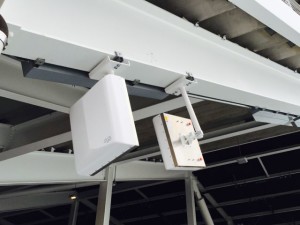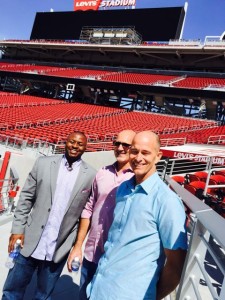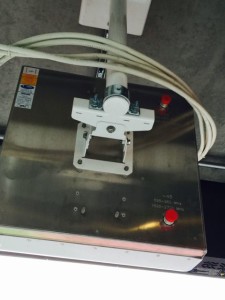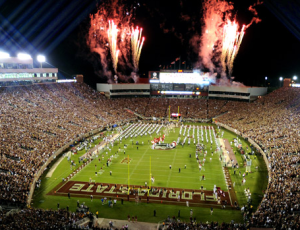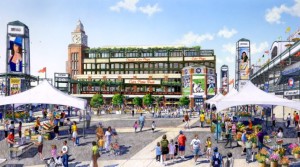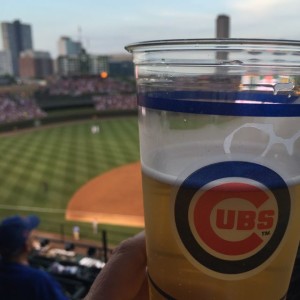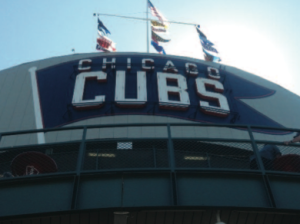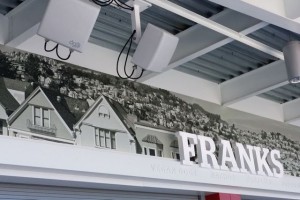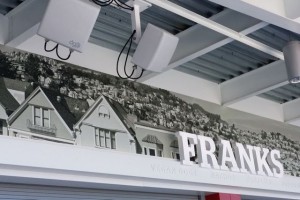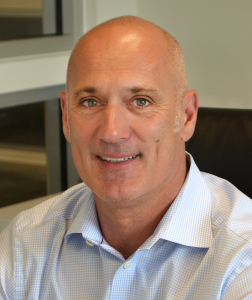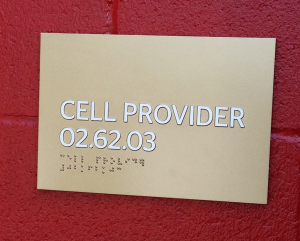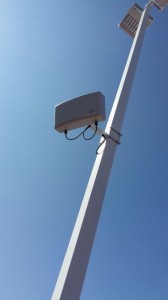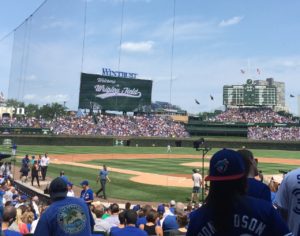
The Chicago Cubs’ Wrigley Field will have a new DAS working for opening day. Credit for these 2017 season pictures: Paul Kapustka, MSR (click on any photo for a larger image)
Designed and deployed by DAS Group Professionals, the new in-stadium cellular network was originally scheduled to be ready by last year; but when the Cubs took their historic march to the World Series title in 2016, many of the in-progress construction plans for Wrigley Field got delayed or rearranged, to the objection of nobody at all who cheers for the north siders.
And even though some of the most ambitious parts of the Wrigley renovation took place this winter — including removing most of the seats and concrete in the lower seating bowl to clear the way for some lower-level club spaces — the DGP crew along with the Cubs’ IT organization delivered the new cell network in time for the first pitches scheduled Monday afternoon.
Wi-Fi coming in as season goes on
“We definitely put scheduling and timing to the test, but we got it done,” said Andrew McIntyre, vice president of technology for the Chicago Cubs, in a phone interview. First announced back in 2015, the networking plan for the Wrigley renovations — which includes coverage for the plaza outside the stadium, the new team office building as well as the across-the-street Hotel Zachary that also just opened for business — also includes a new Wi-Fi network using gear from Extreme Networks. Since the Wi-Fi network is more construction-conflicted than the DAS deployment, it will be introduced gradually over the next few months, McIntyre said.
“By the All-Star break, we should have both systems online,” McIntyre said.
The DAS system deployed by DGP uses JMA equipment, just like DGP’s other big-stadium DAS deployments at the San Francisco 49ers’ Levi’s Stadium and the Sacramento Kings’ Golden 1 Center. Steve Dutto, president of DGP, acknowledged the challenge of the Wrigley buildout, including one instance where DGP technicians needed to set up scaffolding to mount antennas but couldn’t because instead of a concrete floor there was a 60-foot hole in the ground.
“We worked around all that and got it done,” said Dutto. According to Dutto DGP has signed up all four major U.S. wireless carriers for the DAS, with all except Sprint operational for opening day. The head-end building for the DAS, he said, is located in what he thinks is a former hot-dog stand a half a block from the park. (If you’re looking for a snack in the head end room, just remember, in Chicago there’s no ketchup on hot dogs.)Dutto said the DAS antennas are all overhead mounts, not a problem in Wrigley since the overhangs offer plenty of mounting spaces. However, given the historic look and feel of the park, Dutto did say that “we definitely had to tuck things away better and make sure we had good paint matches.” Not a Chicago native, Dutto said that the charm of the stadium hit him on first view.
“When we pulled up for the first time,” he said, “it was… wow. There’s nothing like it.”
Under seat for Wi-Fi will take time to deploy
The Cubs’ McIntyre, who admits to guzzling coffee by the quart these days, said the field-level renovations — which included removing all lower seats and the foundational concrete to clear out room for field-level club spaces — made finishing the Wi-Fi deployment something that couldn’t be pushed. With no overhangs covering the premium box seat areas, Wi-Fi APs there will need to be mounted under seats, something that just couldn’t get finished by Monday.
“It’s less of a technical challenge and more of a structural engineering challenge,” said McIntyre of the under-seat deployment method, which usually involves a lot of work with drilling through concrete and mounting APs in weather-sealed enclosures. McIntyre said the Cubs and Extreme also plan to use under-seat deployments in Wrigley’s famous outfield bleachers, which also lack any overhead infrastructure. In what he termed a “slow roll,” McIntyre said parts of the Wi-Fi network will come online gradually as the season progresses, starting first with the spaces outside the stadium.
Bringing backbone power to the new network is partner Comcast Business, which just announced a sponsorship deal with the Cubs that will see a “XfinityWiFi@Wrigley” label on the Wrigley Wi-Fi SSID. According to McIntyre Comcast will bring in twin 10-Gbps pipes to power the Wrigley Wi-Fi network.
This panoramic view shows why the lower level seats will need under-seat APs for Wi-fi
